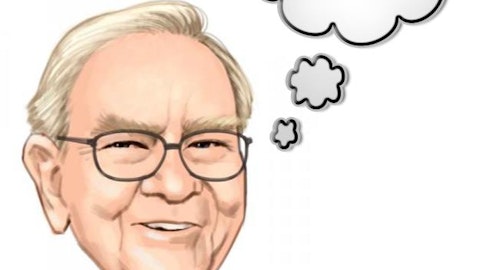Stephen Volkmann: Great. That’s helpful. And then just a final quick one. I think you laid out sort of a long-term target, 100% free cash flow to net income over sort of a longer period, and we can all sort of try to guesstimate sort of what’s what quarter-to-quarter. But are you still committed to that sort of long-term 100% free cash flow target?
John Engel: 100% committed. If you look back at the company, let’s just go kind of premerger close back in 2020, and you were to look back on a five or 10 year cumulative basis, legacy WESCO averaged over 100% of net income, free cash flow and Anixter was right in the same zip code. So the answer is absolutely, yes, together. I think, obviously, this pandemic has driven some unique, let’s call it, some unique results in our business on how we had to manage the supply chain and our inventories through the most disruptive period, the front end of it. I mentioned as bullwhip effect at the back end of it. But as we get back to equilibrium, with the power of our portfolio, the scale in particular, and the digital transformation that we’re executing that we haven’t talked a lot about that, fundamentally, that will improve our ability to increase our working capital terms, in particular inventory.
So I’m not raising the 100% of net income. I’ll just tell you that we have shown with a long successful track record of consistently doing across the entire economic cycle. What’s new is, as we put these two companies together with our scale and this digital transformation, we think we’ll have increased cash generation opportunities versus what either company could do on a premerger basis once the digital transformation is complete. We’ll leave that for a future discussion because that will be a bit out there. But in the short to medium, yes, the 100% were locked and loaded as a commitment.
Stephen Volkmann: Great. Appreciate the color. Thank you.
Operator: Thank you. And our next question comes from David Manthey with Baird. Please go ahead.
David Manthey: Thank you. Good morning, everyone.
John Engel: Hello, David.
David Manthey: First off, John, you mentioned that you expect to return to growth in EES in the second half, and then you further said you expected to double-click on those EES trends. So just wondering if you can give us some color on trends within the three subsegments of EES and how you see those playing out in the back half, OEM, industrial construction.
John Engel: Dave, could you repeat the last piece of that? I missed the very end of it, sorry.
David Manthey: Just wondering if you can give us color on how you see OEM, Industrial and Construction rolling out in the back half of the year.
John Engel: Got you. Got you. Thank you. Okay. So I’ll start with Industrial. Very strong momentum in the first half, very strong opportunity pipeline, increased backlog, we expect that continues. And I mentioned, Dave, that I think we’re at the front end of an industrial super cycle. So I would say we remain, for the EES business, we remain very bullish on the industrial portion of that business. Relative to construction, again, look at the backlog that grew sequentially. So we’re encouraged by the opportunity pipeline and the wins that we’re putting on the board. As we shared with you in the last two quarters, we thought EES backlog would decline sequentially as we started to burn it off, we’ve not seen that yet. So I think we expect very strong contributions and strong growth from the project portion of EES that serves construction at value chain.
And as I mentioned in response to Deane’s question, we think these temporary supply chain whipsaw effects on the stock and flow business continue through Q3, but then have improved materially as we move into Q4. And then relative to OEM, the manufactured structures business is a very unique sector or value chain is cyclical. That will be a downturn through the second half of this year. But you look at the balance of OEMs, the balance of OEM is — there’s a [Technical Difficulty] we sell that into many different industrial end market verticals, including semiconductor. So I think as we move forward with OEM through the second half, but more importantly for next year, we remain very bullish on the solution capabilities that we have with our OEM business.
David Manthey: That’s helpful. Thank you. And then just for completeness here. What percentage of EES segment revenue specifically or stock and flow?
David Schulz: David, it’s Dave Schulz. So right now, our stock and flow business is running about 60% on our EES business.
David Manthey: Okay. Thanks very much.
Operator: Thank you. And ladies and gentlemen this concludes our question-and-answer session. I’d like to turn the conference back over to Mr. Engel for any closing remarks.
John Engel: Well, thank you all. We are at the top of the hour. Thank you all for your support. It is much appreciated. We look forward to speaking with many of you. I know we have many calls scheduled over the next several days. And also, over the next two months, we have a robust schedule. We will be participating in the Jefferies Industrial Conference, the RBC Global Industrials Conference and the Morgan Stanley Laguna Conference during the third quarter. Thank you all for joining our call. Have a good day.
Operator: Thank you, sir. This concludes today’s conference call. We thank you all for attending today’s presentation. You may now disconnect your lines and have a wonderful day.
Follow Wesco International Inc (NYSE:WCC)
Follow Wesco International Inc (NYSE:WCC)
Receive real-time insider trading and news alerts





